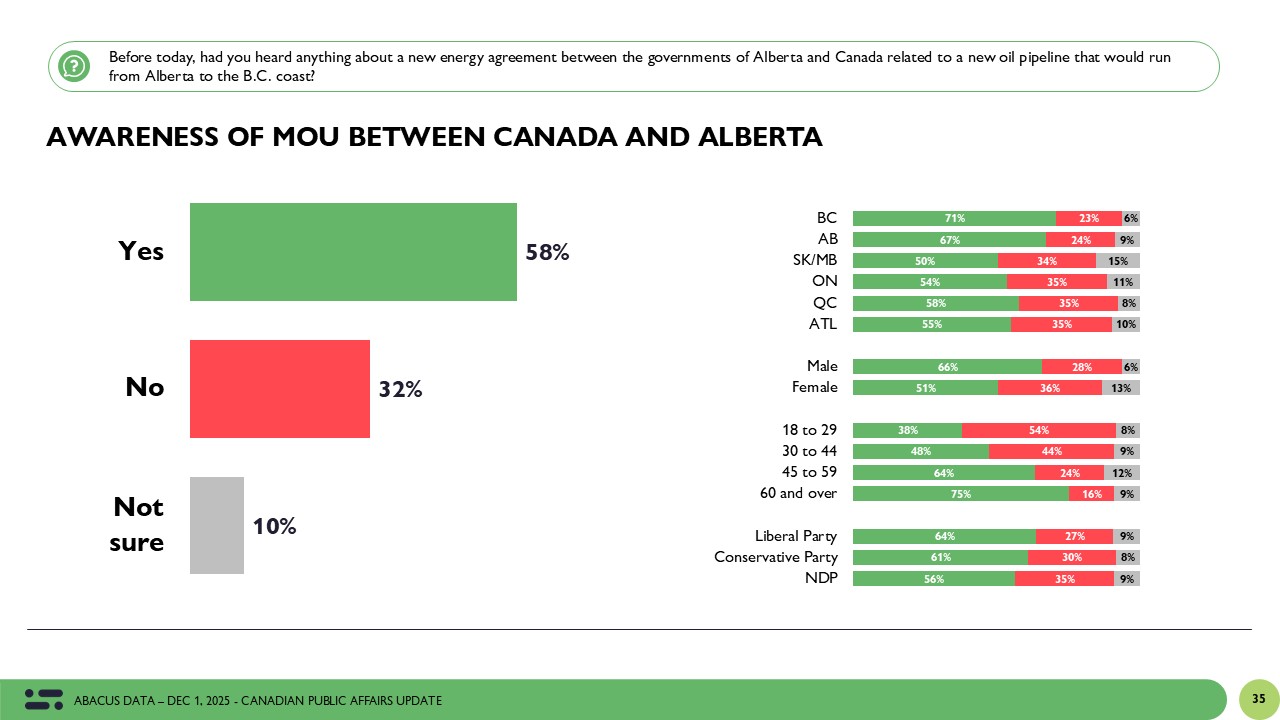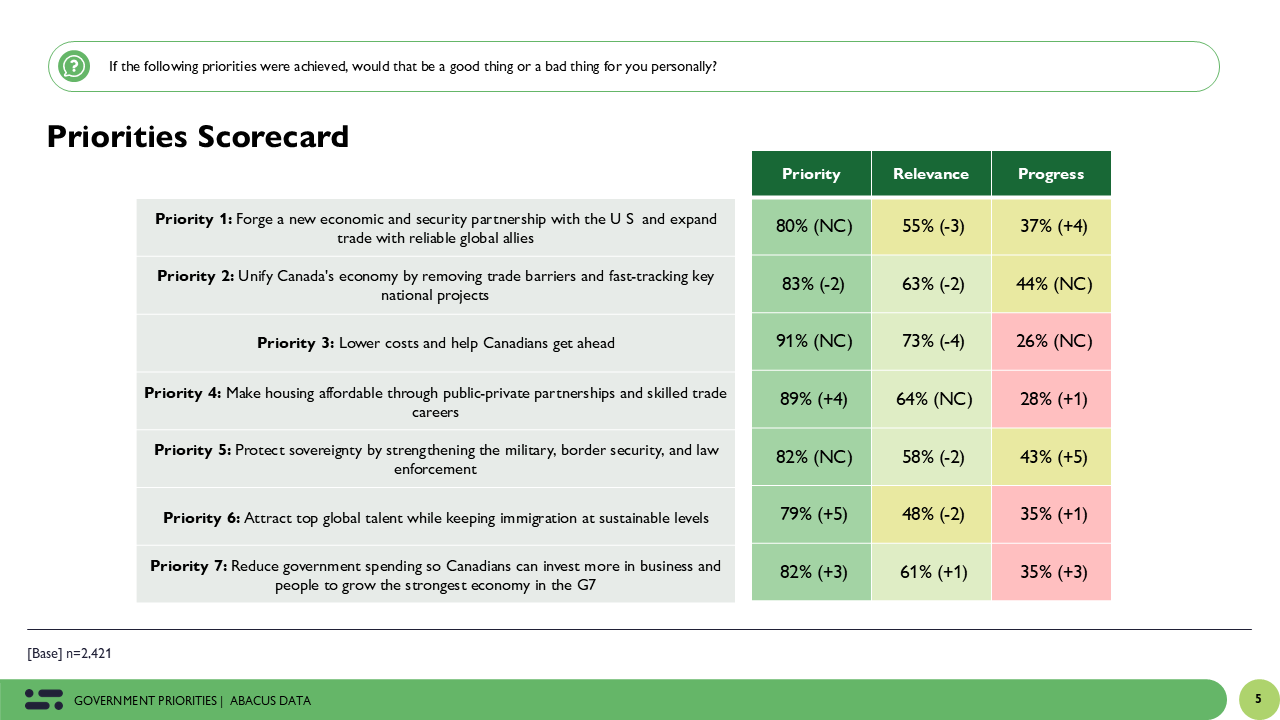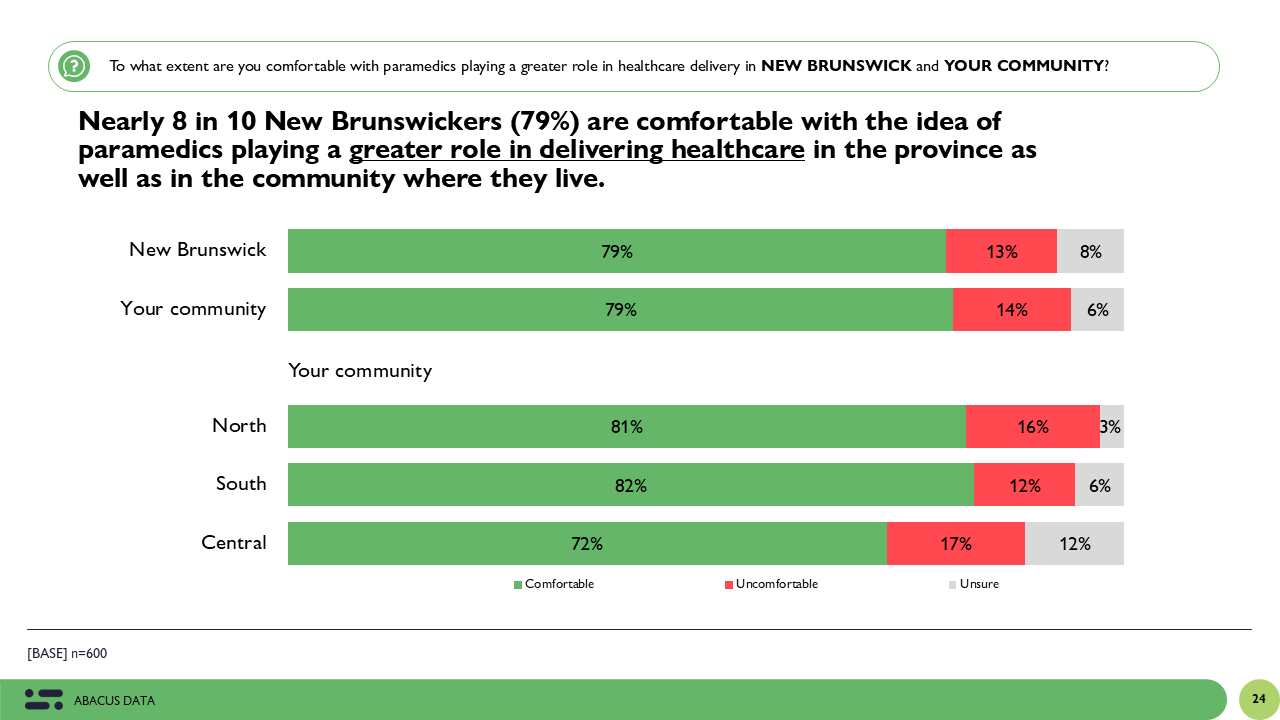Ontarians Open To Replacing Speed Cameras If Safety Investments Follow: New Poll
November 13, 2025
A new province-wide survey conducted by Abacus Data reveals a clear preference among Ontarians for traffic calming infrastructure over the continued use of automated speed cameras. While the Ford government maintains a favourable standing with much of the electorate, the findings show that a pivot away from speed cameras and toward more visible, community-based safety interventions would be met with broad public support, particularly if paired with provincial investments in infrastructure like speed bumps, roundabouts, and enhanced police enforcement.
Speed Cameras Not a Top-of-Mind Issue
The survey of 2,000 Ontario adults, conducted between October 28 and 29, finds limited public salience for automated speed cameras. When respondents were asked in an open-ended way to name something that stands out about the Ford government, only 4% mentioned speed cameras at all. Instead, Ontarians were more likely to associate the government with economic issues, communication style, and broader transportation and infrastructure priorities.
This low level of unprompted attention suggests that speed cameras are not a deeply polarizing or emotionally charged issue. Among Progressive Conservative Party supporters, the issue barely registers. Only 2% of PC voters referenced speed cameras, reinforcing the idea that the government has room to maneuver on the file without alienating its base.
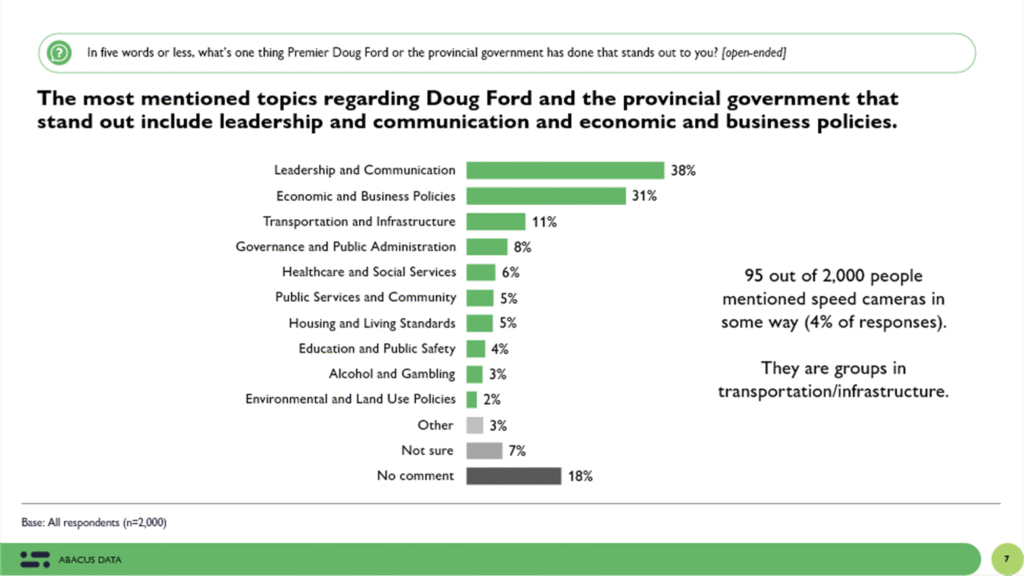
Traffic Calming Seen as a Better Approach
When presented with a clear choice, half of Ontarians (50%) say they prefer traffic calming measures such as speed bumps, raised crosswalks, signage, roundabouts, and increased police enforcement over automated speed cameras. One in three (33%) express a preference for automated cameras, while 17% say they are unsure.
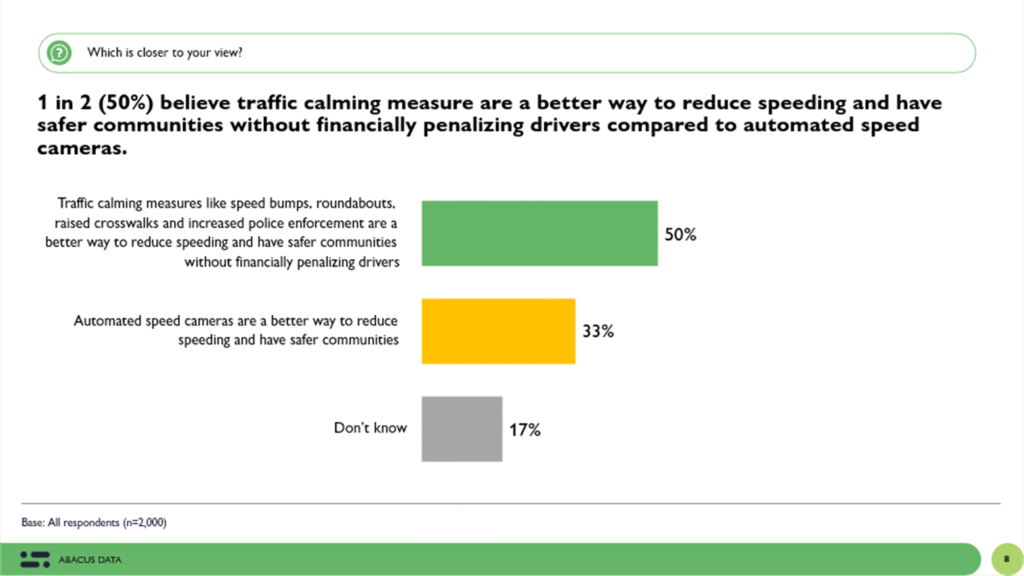
Support for traffic calming cuts across most demographics and regions. Younger Ontarians aged 18 to 44 are especially likely to prefer traffic calming, as are parents with children under 18 (55%) and PC voters (64%). Regionally, support is highest in Eastern Ontario and Northern Ontario, where 56% and 52% respectively favour calming over cameras.
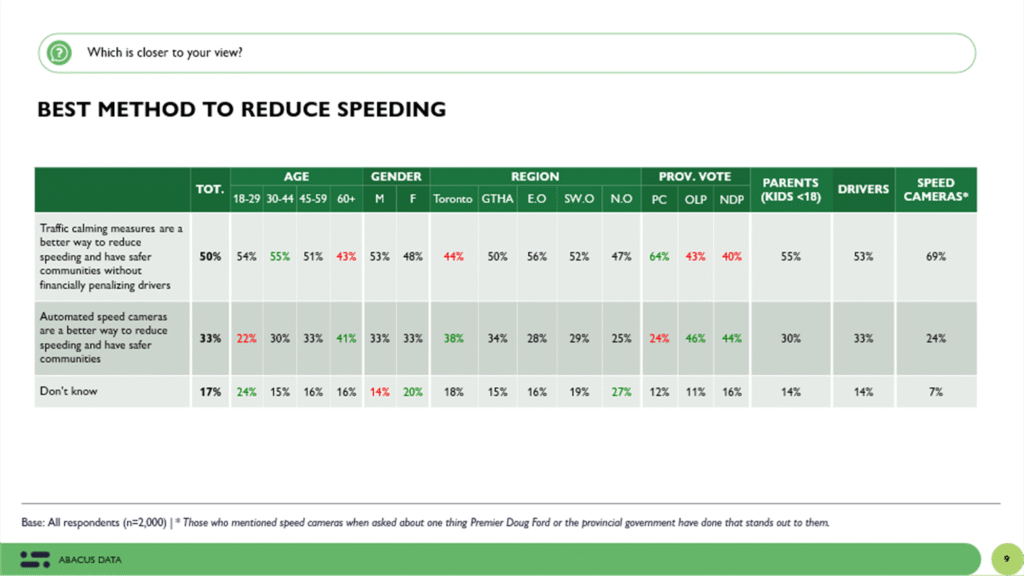
Interestingly, even among those who spontaneously mentioned speed cameras earlier in the survey, 69% prefer traffic calming, while only 24% favour keeping the cameras in place.
A Tangible Impact on Driver Behaviour
There is also widespread agreement that traffic calming features work. Four in five respondents (80%) say these interventions cause them to slow down when driving, with nearly half (46%) saying they “always” do so. The numbers are consistent across gender and age groups, and hold strong among both urban and rural residents.
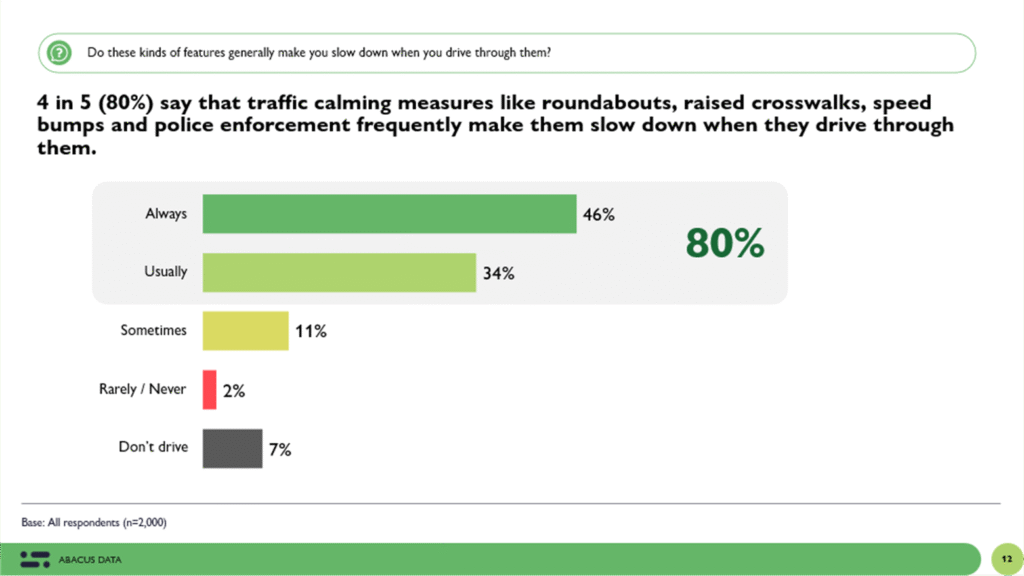

The perceived effectiveness of specific interventions is equally striking. Speed bumps, the most familiar calming tool, are viewed as effective by 84% of respondents, while increased police enforcement is close behind at 80%. Raised crosswalks and roundabouts are each seen as effective by over two-thirds, and even lower-cost features like flashing signage are rated positively by 68%.
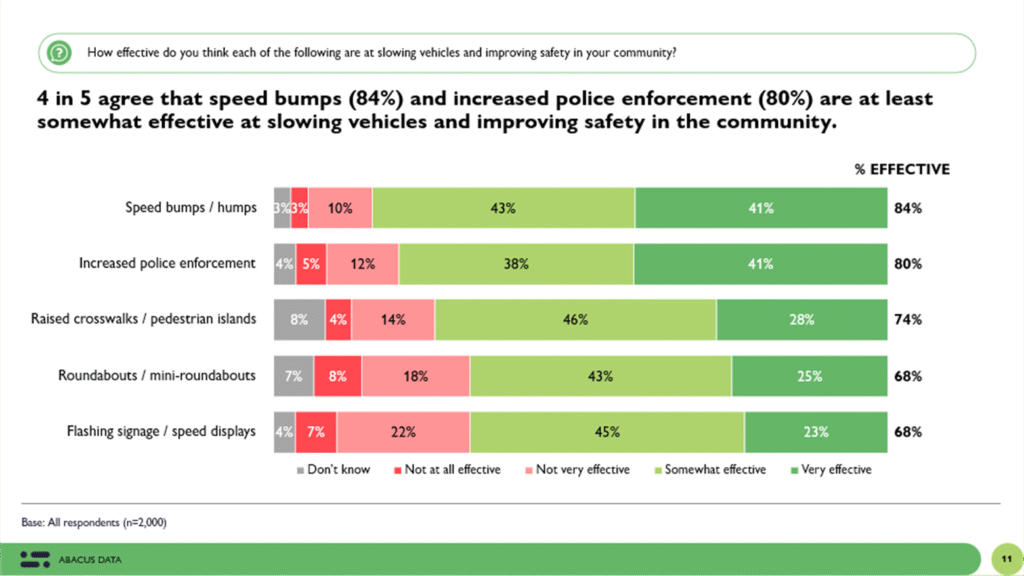
Broad Agreement That Calming Makes Communities Safer
Three in four Ontarians (74%) agree that more investment in traffic calming would improve community safety. That includes 82% of PC voters and 81% of parents of children under 18.
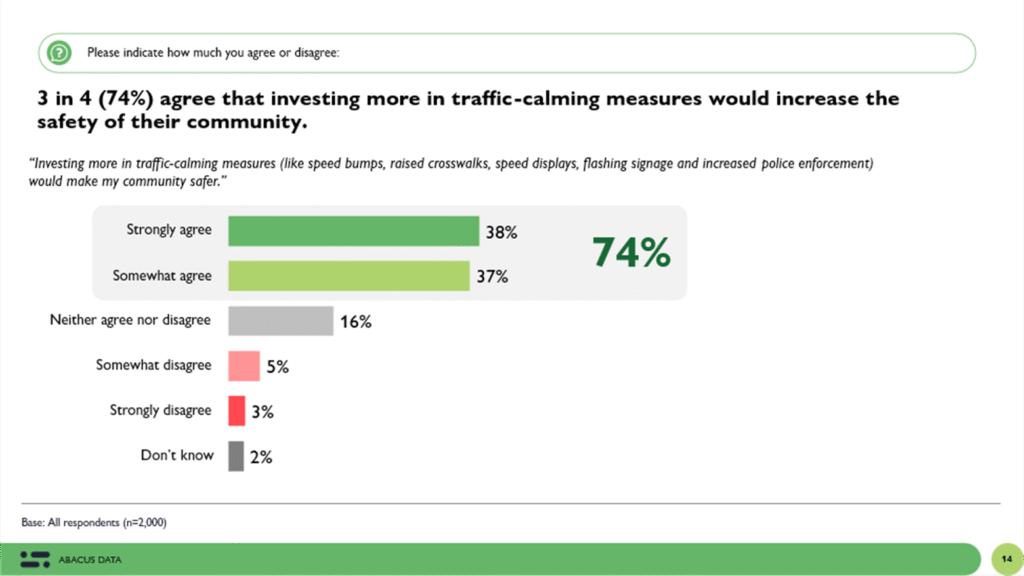
Support is strong in all corners of the province, from 75% in Toronto, 76% in the GTHA, 71% in Southwestern Ontario and 72% in Eastern ONtario. Agreement is also consistent across the political spectrum, with 77% of Liberal and 70% of NDP supporters on board. Only 7% of Ontarians express disagreement with the idea, and just 2% are unsure.
What is particularly notable here is that the belief in traffic calming’s effectiveness is not conditional on party, region, or age. Ontarians appear to be unified in their desire for safer communities, and willing to embrace tangible, physical infrastructure as part of that goal.
A Viable Policy Trade-Off
Perhaps the most consequential finding for the government is how voters respond to a policy trade-off. When asked whether they would support the removal of speed cameras if it came with new provincial funding for traffic calming infrastructure, nearly 60% said they would be more supportive, including 31% who said they would be much more supportive.
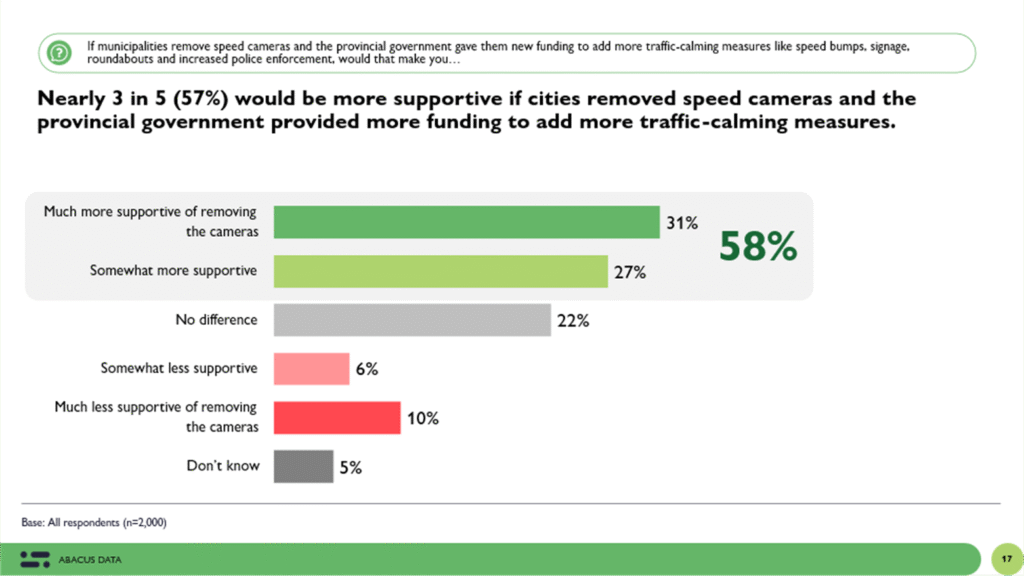
Among PC voters, that number rises to 71%. 66% of parents of kids aged 18 and under also say they are more likely to support the removal of automatic speed cameras if the provincial government gave municipalities more funding to add more traffic-calming measures like speed bumps, signage, and increased police enforcement.
Only 16% of Ontarians say they would be less supportive under this scenario.
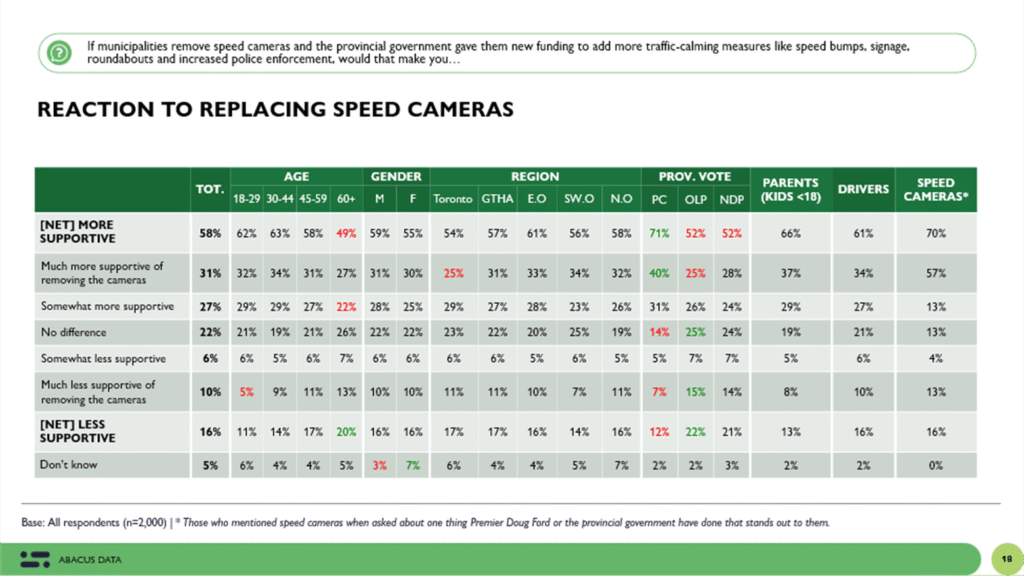
Political Context
The traffic safety debate is unfolding against the backdrop of continued political strength for the Ford government. The poll finds the Progressive Conservatives with a 22-point lead over the Ontario Liberals and the NDP, each tied at 25%. Current vote intention shows 47% of Ontarians would support the PCs if an election were held today, while the Liberals and New Democrats each capture one-quarter to one-fifth of the vote.
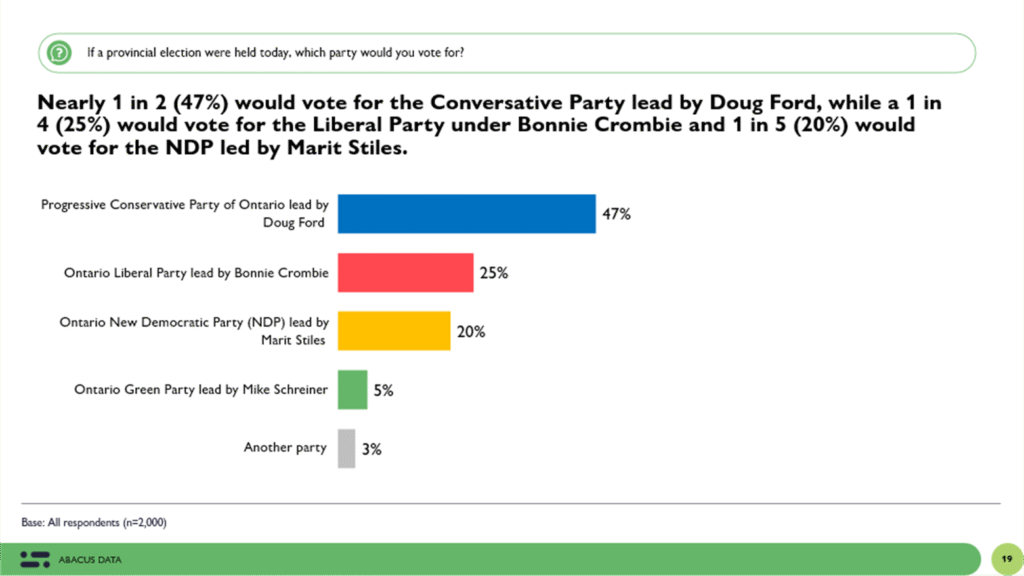
Government approval remains net positive at +9, with 43% approving of the Ford government’s performance and 34% disapproving. That support is particularly strong among men (50%), parents of kids aged 18 and under (51%) and drivers (47%). Among cited automated speed cameras in the open-ended question earlier, 54% approve of the Ford government’s performance.
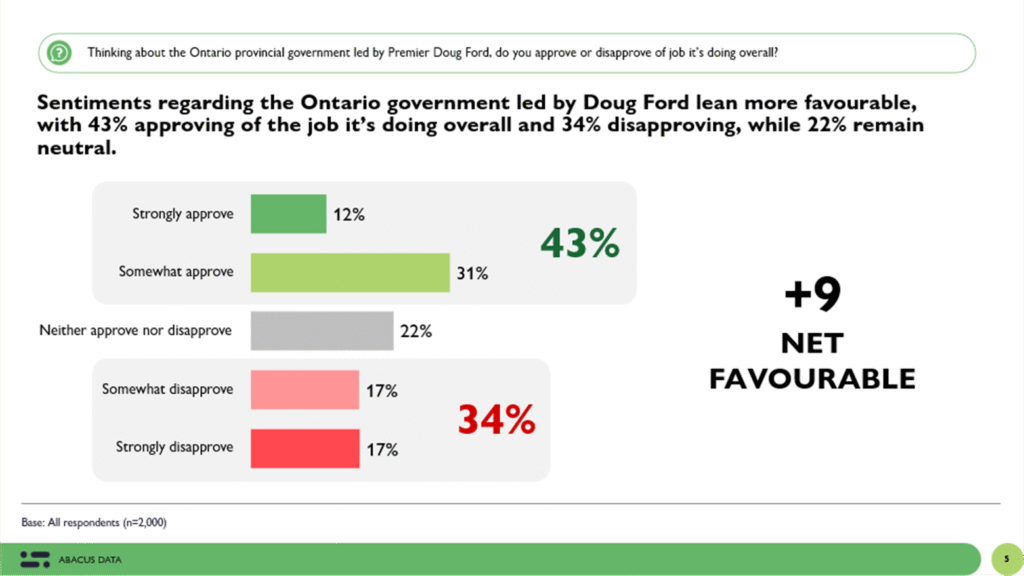
The Upshot
The results of this province-wide survey reveal that Ontarians show broad and consistent support for replacing automated speed cameras with more visible, community-focused traffic and pedestrian safety measures. While the issue of speed cameras is not highly salient for most residents, mentioned by just 4% when asked what stands out about the provincial government, people are far more engaged when asked about practical solutions to make roads safer.
Half of Ontarians say they would prefer physical traffic calming features like speed bumps, raised crosswalks, roundabouts, and increased police enforcement over the use of automated speed cameras. Only a third prefer the current use of cameras. This preference holds across most demographic and regional groups, and is particularly strong among younger Ontarians, parents, and PC Party supporters.
There is also widespread belief that traffic calming measures are effective. Four in five Ontarians say they slow down when they encounter these features while driving, and nearly three in four agree that investing more in these kinds of interventions would make their communities safer.
When asked to consider a scenario where speed cameras are removed and replaced with municipally delivered traffic calming measures funded by the province, nearly 60% say they would be more supportive of that approach. Support increases further among key segments, including Progressive Conservative voters and parents.
Altogether, the findings suggest that Ontarians are ready to embrace alternative forms of traffic safety over automated speed cameras.
Methodology
The survey was conducted by Abacus Data on behalf of Creative Currency with a representative sample of 2,000 Ontario residents aged 18 and over. The survey was fielded online between October 28 and 29, 2025.
The margin of error for a probability-based sample of this size is ±2.2 percentage points, 19 times out of 20.
The data were weighted according to census data to ensure the sample is representative of the population by age, gender, education, and region.
Due to rounding, totals may not add up to exactly 100%.
ABOUT ABACUS DATA
We are Canada’s most sought-after, influential, and impactful polling and market research firm. We are hired by many of North America’s most respected and influential brands and organizations.
We use the latest technology, sound science, and deep experience to generate top-flight research-based advice to our clients. We offer global research capacity with a strong focus on customer service, attention to detail, and exceptional value.
And we are growing throughout all parts of Canada and the United States and have capacity for new clients who want high quality research insights with enlightened hospitality.
Our record speaks for itself: we were one of the most accurate pollsters conducting research during the 2021 Canadian election following up on our outstanding record in the 2019, 2015, and 2011 federal elections.
Contact us with any questions.
Find out more about how we can help your organization by downloading our corporate profile and service offering.


